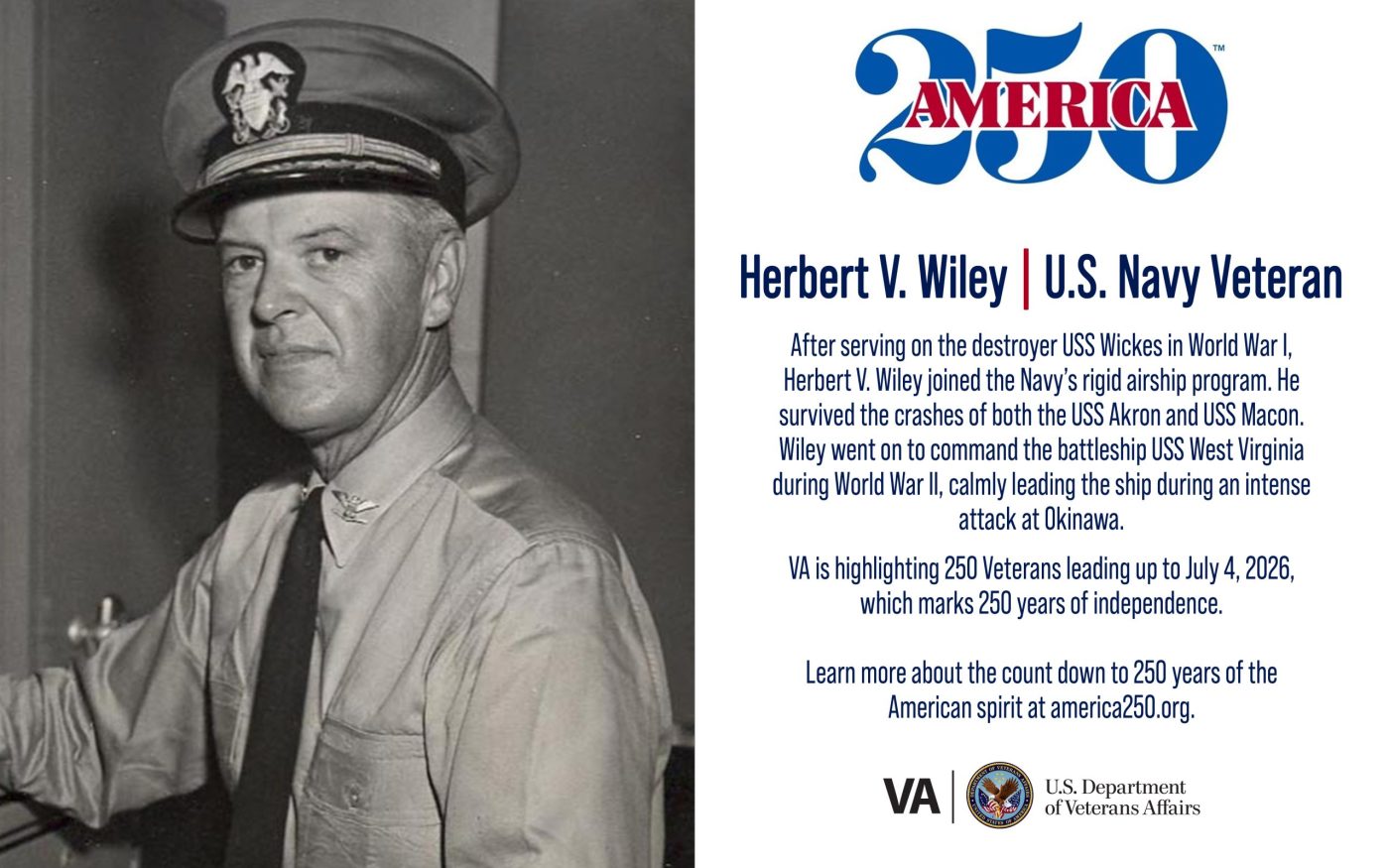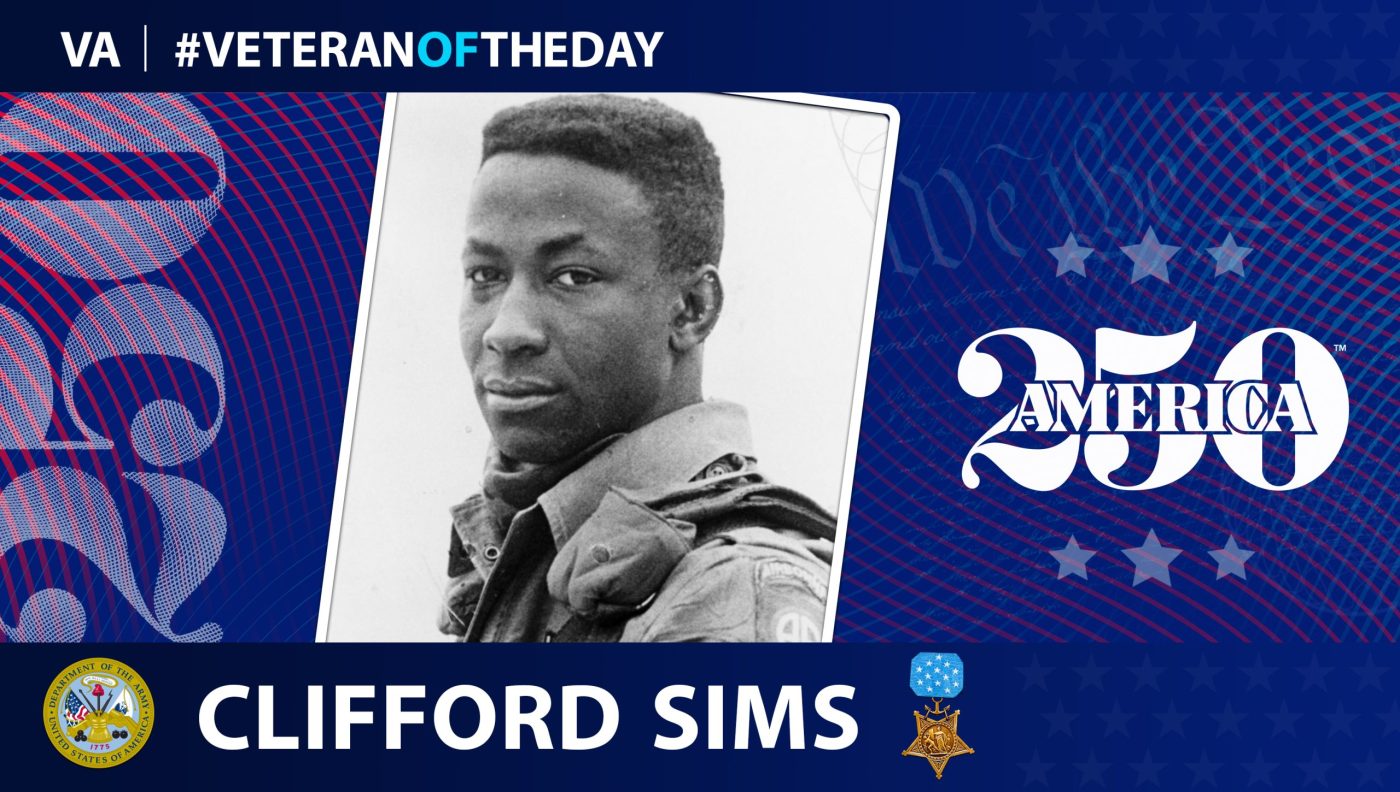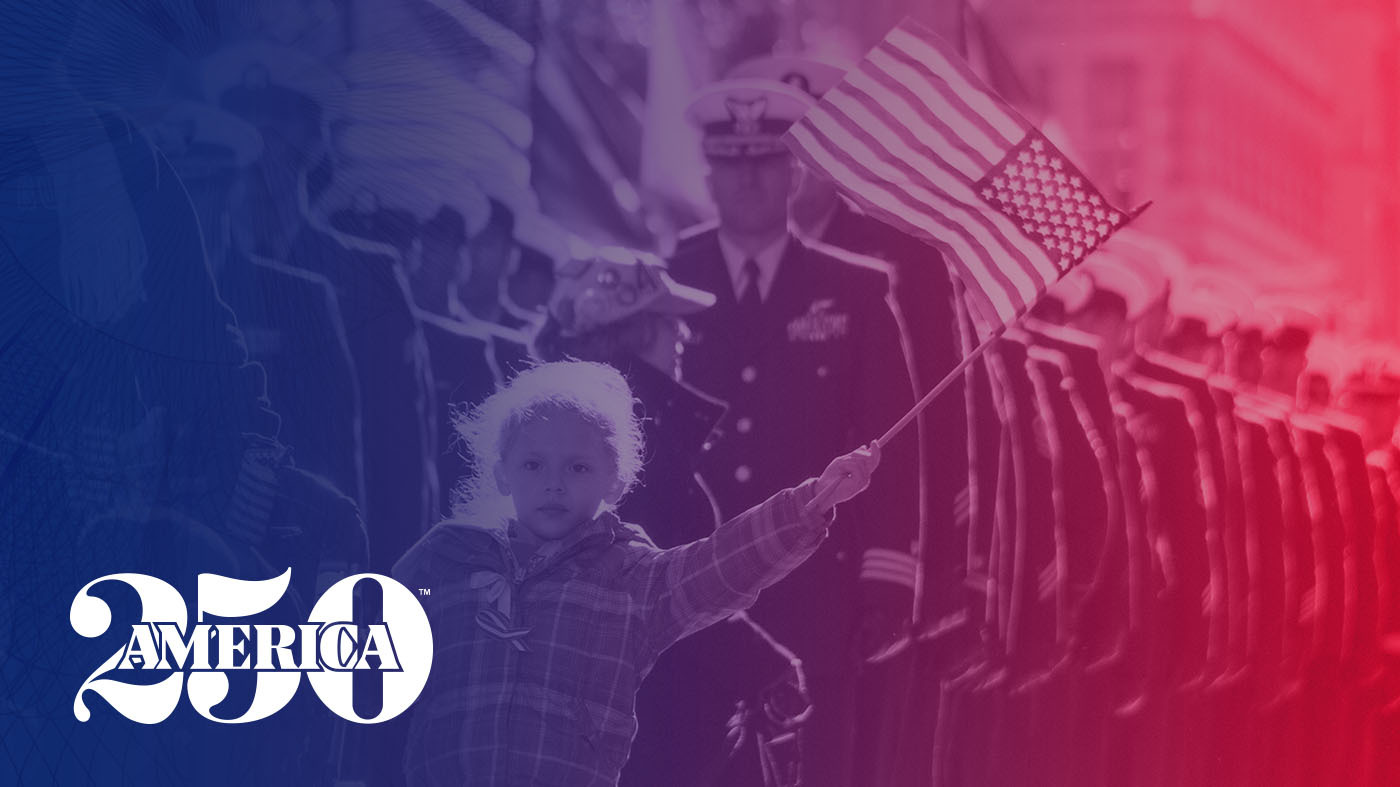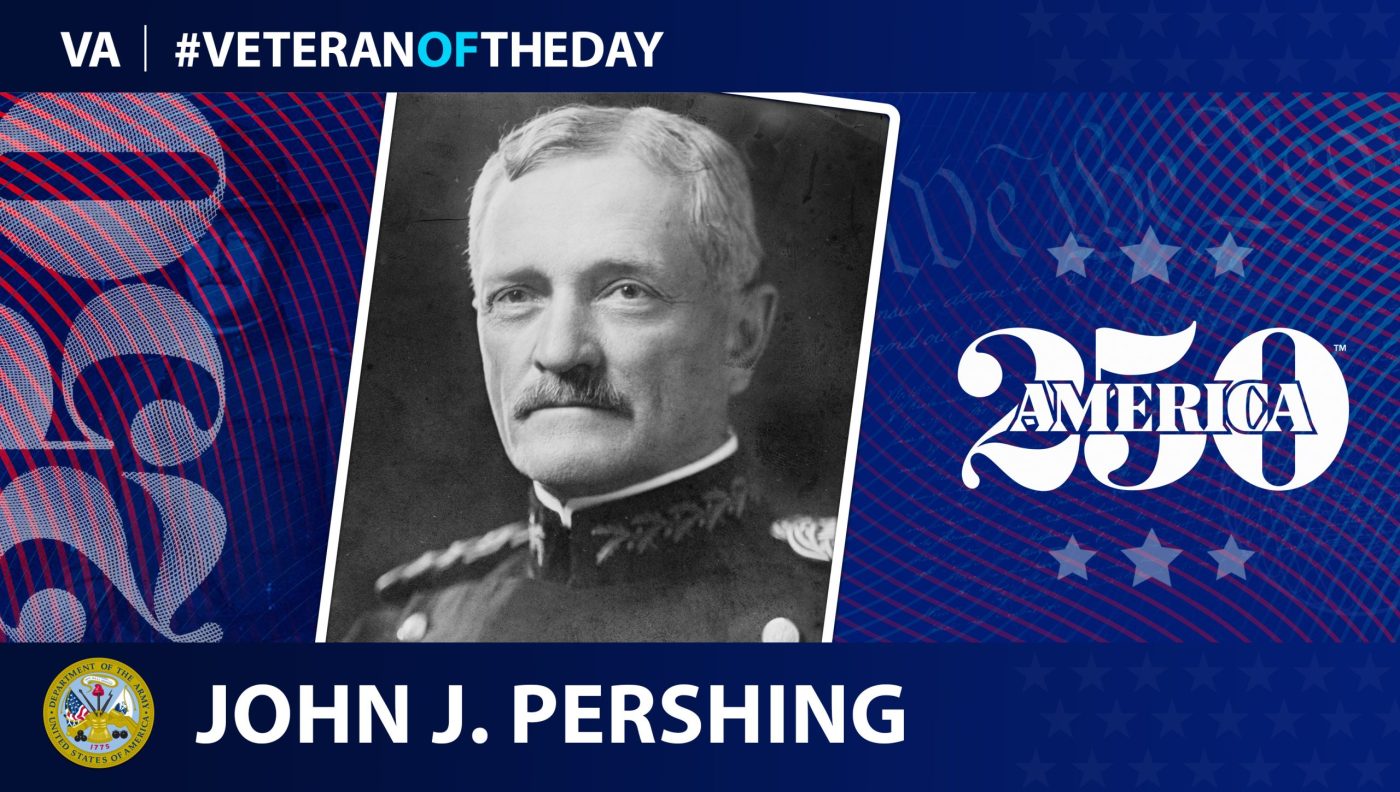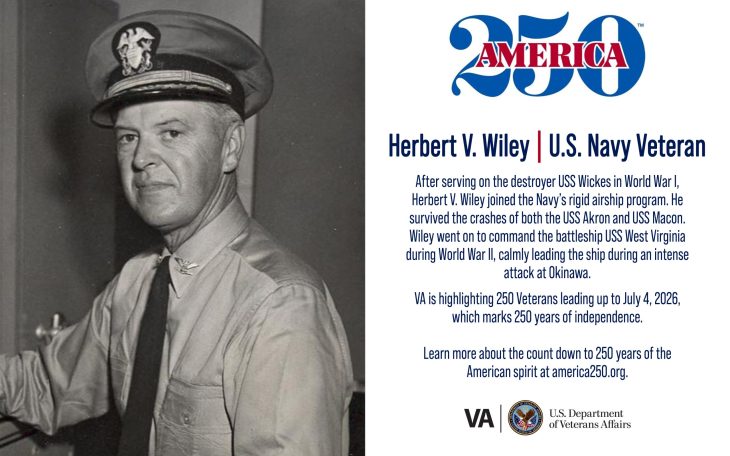
This week’s America250 salute is Navy Veteran Herbert V. Wiley, who served on rigid airships before commanding USS West Virginia during World War II.
Herbert V. Wiley’s 32-year career with the Navy was marked by disasters and acts of heroism. Born in Wheeling, Missouri, in 1891, Wiley attended the U.S. Naval Academy (USNA) in Annapolis, Maryland. After receiving a commission in 1915, he served on several ships before joining the destroyer USS Wickes and carrying out escort duty during World War I. He then spent time teaching engineering and physics at the USNA.
In 1923, Wiley volunteered to train as part of the Navy’s new lighter-than-air rigid airship program. He was assigned to work with USS Shenandoah, the Navy’s first rigid airship, which was based on Germany’s World War I Zeppelin bomber. In 1924, a strong gale wind pulled Shenandoah off its 160-foot mast. Wiley was not on board, but those who were managed to control the airship and direct it back to the base. The Shenandoah suffered extensive damage. Wiley was assigned to focus on ground duties following the incident. In 1925, Shenandoah was ripped in two in mid-air by violent winds, killing 14 of the 40 crew members. Wiley spent several days at the crash site assisting the recovery efforts.
In November 1925, Wiley requested to take an examination to qualify for promotion to lieutenant commander. He passed and was assigned to USS Los Angeles, where he remained until 1930. Then, he became the executive officer aboard the airship USS Akron. In 1933, while traveling along the New Jersey coastline, USS Akron flew directly into a severe storm. The ship experienced heavy turbulence and was unable to stabilize. “The order was given to standby for a crash. The ship hit the water within 30 seconds after the order and most of us, I believe, were catapulted into the water,” Wiley said after the incident. Of the 76 crew members, 73 were killed. Wiley had been on the left side of the control car when the crash occurred. He was found unconscious and floating in the water by a German merchant ship, whose members pulled him aboard.
Undeterred by his experiences, Wiley took command of another airship, USS Macon, in 1934. The following year, the airship suffered a structural failure during a storm and crashed off the coast of California. Two crew members were killed. Wiley survived and was awarded a Navy and Marine Corps Medal for putting his own life on the line to rescue a member of his crew. Following the USS Macon incident, the Navy ceased production of rigid airships.
During World War II, Wiley was commander of Destroyer Squadron 29 in the Pacific. His squadron successfully stalled and damaged Japanese convoys, fighting in the battles of Makassar Strait and Java Sea before traveling to Australia in 1942.
In 1944, Wiley assumed command of the battleship USS West Virginia. After assisting in the liberation of the Philippines, the ship was the first to fire during the Battle of Surigao Strait. His leadership of the ship earned him a Legion of Merit and a Navy Cross for orchestrating “a vigorous and unrelenting attack against the Japanese in the face of intense opposition.” In 1945, he directed USS West Virginia to Okinawa, where the vessel withstood a kamikaze attack. He remained on deck while his ship was in action and commanded the ship through aerial attacks, providing cover and support for ground troops. He was awarded a Bronze Star for his achievements during the campaign.
Wiley rose to the rank of rear admiral. He retired from the Navy in 1947 and became a professor of engineering at the University of California, Berkeley. He died in 1954.
We honor his service.
America250
VA is highlighting 250 Veterans leading up to July 4, 2026, which marks 250 years of independence. Learn more about the count down to 250 years of the American spirit at https://america250.org/.
Writers: Michael Veronda, Isabel Mahon
Editors: Nathaniel Scott, Theresa Lyon
Fact Checkers: Timothy Georgetti, Patrick E. Woods
Topics in this story
Link Disclaimer
This page includes links to other websites outside our control and jurisdiction. VA is not responsible for the privacy practices or the content of non-VA Web sites. We encourage you to review the privacy policy or terms and conditions of those sites to fully understand what information is collected and how it is used.
Statement of Endorsement
Reference herein to any specific commercial products, process, or service by trade name, trademark, manufacturer, or otherwise, does not necessarily constitute or imply its endorsement, recommendation, or favoring by the United States Government, and shall not be used for advertising or product endorsement purposes.
More Stories
Today's America250 and #VeteranOfTheDay honors Army Veteran Clifford Sims, who was posthumously the Medal of Honor.
America250 wants you to share your story. We want to hear the story of your service and your reflections on our nation’s past, present and future.
Today's America250 and #VeteranOfTheDay is Army Veteran John J. Pershing, who became General of the Armies of the United States, the highest rank possible for any member of the United States Armed Forces.

